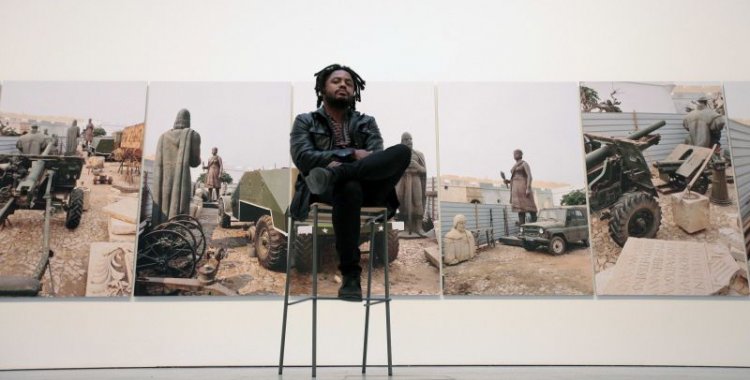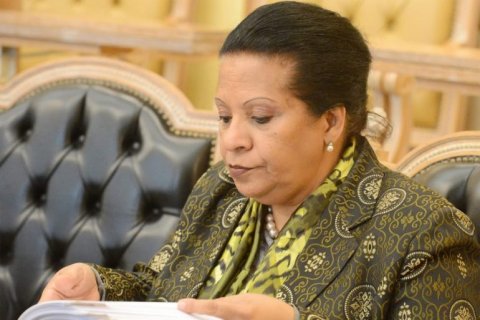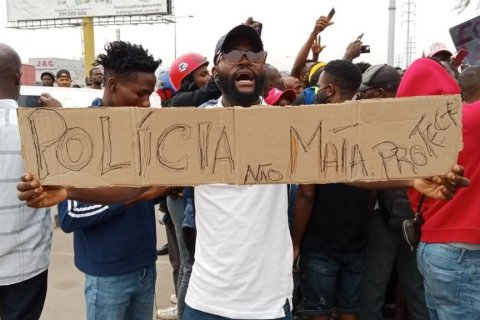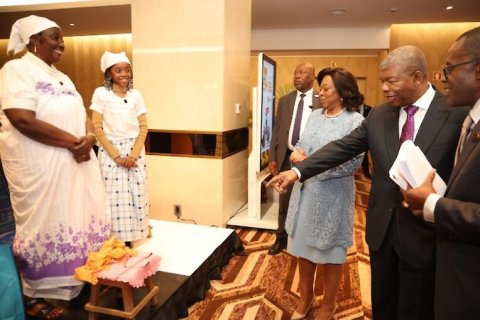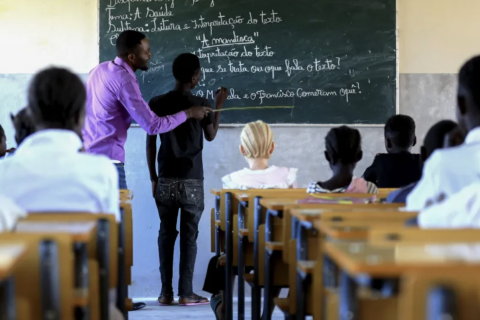In an interview with the Lusa agency, Kia Henda explains that the installation "Red Light Square - history is a bitch project: Kinaxixi" takes advantage of the transformations that have been happening in this square of the capital, over the various periods of its history, to reflect on this past. , from colonialism to civil war, peace and urban expansion, to greed and money laundering, eventually reaching "a universal dimension", identifiable in the relationship of a people with their public space and with their memory.
The invitation came from the organization of the Netherlands festival, which will complete half a century this year, with the artist born in 1979 developing "Red Light Square ..." in a residence in the city of Porto, under the company's INResidence program city hall Agora.
At the Institute, a project linked to architecture and visual arts, he developed "the model of the installation", a rectangle of red light that defines a space with "five figures, each representing one of the five moments of the square's chronology".
"The performance at the festival will also include live music and a recited text that reveals the history of Kinaxixi and a nation, not without some fictional props", reads the presentation.
The invitation of Paulo Moreira, founder and artistic director of the Institute, for a new collaboration, follows other works, such as "A Sala da Nação", presented at the Lisbon Architecture Triennale, in 2013, and the "Memorial de Homenagem às Slave People ", which Kia Henda will install at Campo das Cebolas, in Lisbon.
In this residence in Porto, developed in two phases because crossed by the inauguration of "Something Happened on the Way to Heaven", in Lisbon in November, the Angolan worked and presented the model, patent at the Institute until the last day of 2020.
Taking this square in Luanda and "as if transporting it to Rotterdam" follows the "very strong symbolism in the history of the city and even the country" that Kinaxixi has - a story that runs through the pre-colonial period, on the mythological side, until today.
Before, he says, "there was a lake" in that space, with an associated myth, that of Kianda, "similar to that of Iemanjá in Brazil", about which Pepetela wrote "O Desejo de Kianda", even before the transformation of the square, eliminated during the colonial period.
It follows the Maria da Fonte monument, opened in 1937, reminiscent of the Great War, and, after independence in 1975, the monument was removed, with dynamite, and was even replaced by a Soviet war tank.
With the fall of the Soviet bloc, and the beginning of another political period, "the pedestal is empty just over a decade, until, at the end of the civil war, in 2002, a monument of Queen Nginga is placed".
But the story of that square in Luanda does not end there: with several construction projects spread around the city after the "oil boom" and economic growth ", the project" a large shopping center "for that space, framed in a series of "urban projects for Luanda, closely linked to money laundering and money laundering mechanisms".
Queen Nginga was removed, "to go to a new square", as announced at the time, and in her place "three towers have been erected, which are unfinished, and with no estimate of how much may be finished".
"For me, these towers today represent a monument to greed, to the laundering of capital," Kiluanji Kia Henda told Lusa. "It was important to talk about all these changes in Largo de Kinaxixi, between a mythological being and the unfinished concrete towers," he commented.
From these several centuries of history, which "did not freeze" and live from a "willingness to change according to the moment in which they live", something that they have explored in their work over the last decade, viewers in Rotterdam will have yet another dimension.
"The history of the performance is linked to the body of a woman. Of a sex worker. It is like creating a parallel with the changes in the square. (...) Because the changes were not peaceful, they were violent, and the text addresses this We are talking about the square, or about a specific body, which is colonized, which is violated, a body that undergoes a whole metamorphosis, as well as History itself ", he explains.
The spectators enter a "giant dark room", with images and sound working on the perception and narration of a story, with a performance based on "very simple and basic movements", related to the construction and deconstruction of the monuments in the square.
Although it is evident that "Angola is there", in the story of that woman, and the parallel between urban space and the body, there is "a universal dimension" in the relationship of any people "with public space, with memory" and with various traumas that develop throughout history.
"For me, these towers today represent a monument to greed, to the laundering of capital," Kiluanji Kia Henda told Lusa. "It was important to talk about all these changes in Largo de Kinaxixi, between a mythological being and the unfinished concrete towers," he commented.
From these several centuries of history, which "did not freeze" and live from a "willingness to change according to the moment in which they live", something that they have explored in their work over the last decade, viewers in Rotterdam will have yet another dimension.
"The history of the performance is linked to the body of a woman. Of a sex worker. It is like creating a parallel with the changes in the square. (...) Because the changes were not peaceful, they were violent, and the text addresses this We are talking about the square, or about a specific body, which is colonized, which is violated, a body that undergoes a whole metamorphosis, as well as History itself ", he explains.
The spectators enter a "giant dark room", with images and sound working on the perception and narration of a story, with a performance based on "very simple and basic movements", related to the construction and deconstruction of the monuments in the square.
Although it is evident that "Angola is there", in the story of that woman, and the parallel between urban space and the body, there is "a universal dimension" in the relationship of any people "with public space, with memory" and with various traumas that develop throughout history.
"For me, it is no longer just a question of Angola, it is a universal question of a world in constant change. And how important it is for us to understand what these changes imply for our daily lives. What are these moments and historical periods continue to impact our lives. What do we think, after all, that it is necessary to change? ", he asks.
Multidisciplinary artist, who works mainly with photography, video and performance, Kia Henda's work marks the reflection on collective memory and public spaces, having won the National Art and Culture Award, from the Ministry of Culture of Angola , in 2012, and the Frieze Artist Award, from the London art fair of the same name, in 2017.
He was already present at the Bienal de São Paulo, was selected for collective exhibitions at the Center George Pompidou, in Paris, in 2020, at the Tate Modern, in London, in 2018, and at the Guggenheim in Bilbao, in 2015, the same year he did part of a show at the Smithsonian in Washington, among other international initiatives in the field of visual arts.
In the Municipal Galleries of Avenida da Índia, in Lisbon, the exhibition "Something Happened on the Way to Heaven", which addresses immigrants' expectations, of finding a Paradise in Europe, (and this paradise fading) can still be seen today. after crossing the Mediterranean.

